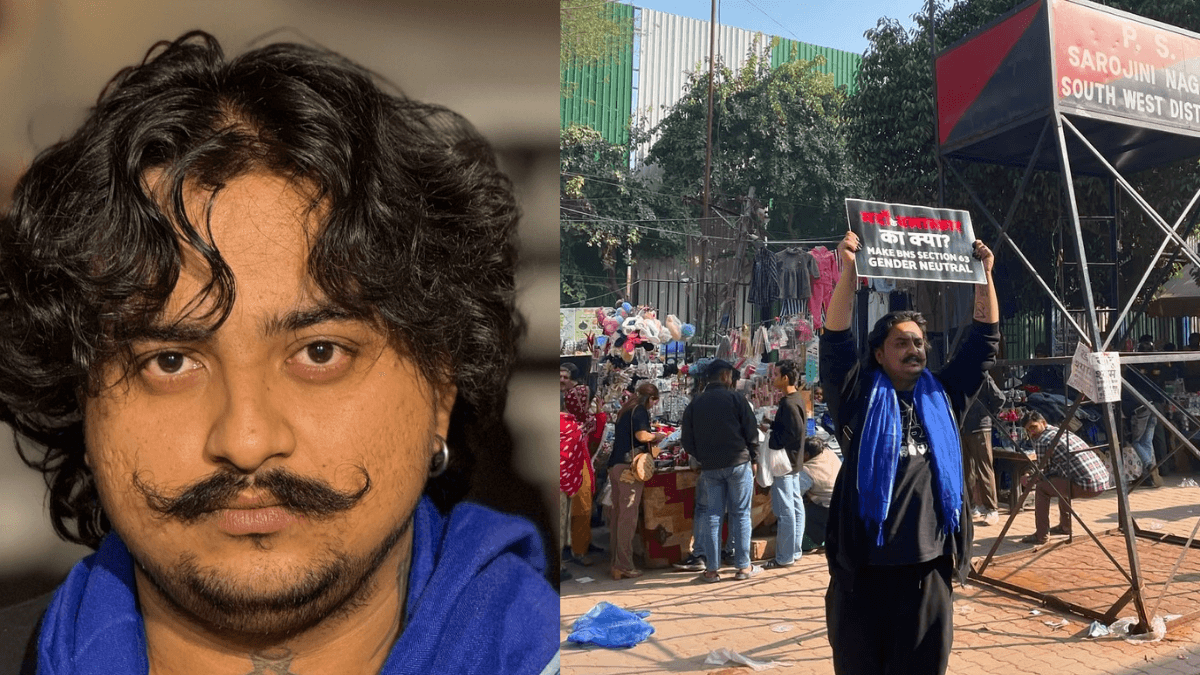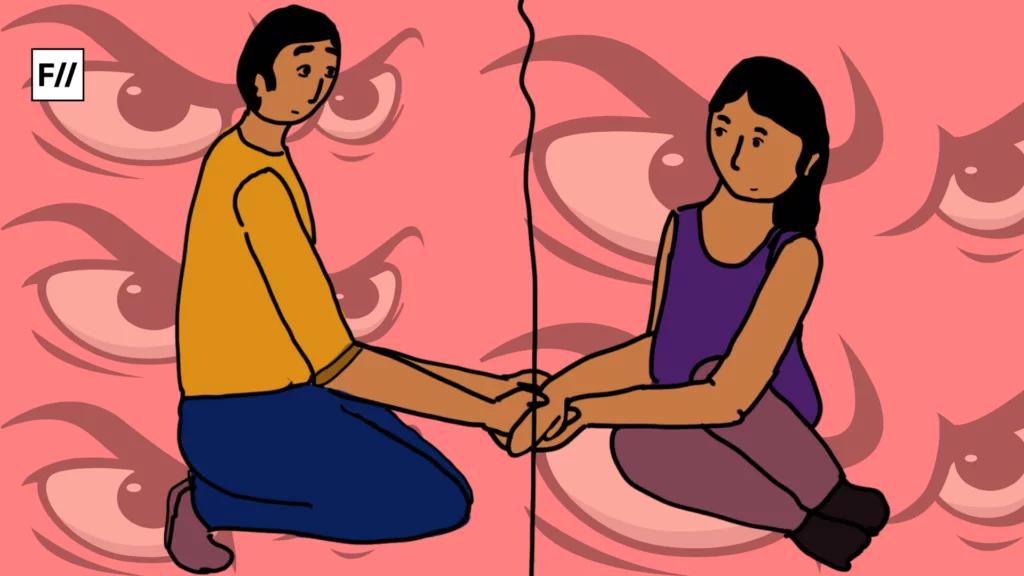“The crisis facing men is not the crisis of masculinity, it is the crisis of patriarchal masculinity. Until we make this distinction clear, men will continue to fear that any critique of patriarchy represents a threat.”
― bell hooks, The Will to Change: Men, Masculinity, and Love
Masculinity is the conventionally designed ideal of a man. But patriarchal masculinity or hegemonic masculinity demands and justifies the dominant position of men and subordination of women in a society. It assigns gender to everything—from roles in a relationship to one’s responsibilities in a family, dictating feelings and how we vent them out. This defines relationships as power struggles instead of equal partnerships where both are considerate for each other’s emotions and needs.
Men are taught to hide their pain, pretend nothing is wrong and use anger as a defence mechanism. No wonder men find it hard to admit when they are vulnerable and need help. No wonder the women in their lives must take their violence since it’s the only way they have ever seen them dealing with situations. Men are trained to invoke fear, confront with abuse rather than words, shut others out instead of opening up to them. Women are labelled as dramatic or weak since their mourning and healing is explicit and visible even though it’s far better a method of coping as opposed to bleeding secretly like men do.
The institutional setup of state mechanisms also have a deeply gendered and patriarchal superstructure. Since National Security is interlinked with militarisation, it is hypermasculine by nature. It’s a common perception that women qualify as “empowered” only when they join the Air Force, Army or Navy. To be a “good police officer” a woman must behave like the men in the force: equally good when it comes to custodial torture, violence and intimidation of under-trials.
This also explains why Dalit police officers often behave as apathetically towards Dalit citizens, as their upper caste counterparts. There is a pressure to “prove yourself” for being worthy of a job dominated by the upper castes since decades, almost becoming more suitable for them by design due to systemic changes.
An anxious masculinity is also central to the Hindutva nationalism practiced by RSS, VHP, Shiv Sena and other right wing extremist groups which explains their emphasis on violence, aggression, vengeance, military strength and display of power.
An anxious masculinity is also central to the Hindutva nationalism practiced by RSS, VHP, Shiv Sena and other right wing extremist groups which explains their emphasis on violence, aggression, vengeance, military strength and display of power. “The foremost task before us is the moulding of a disciplined and virile national manhood,” wrote Golwalkar in Bunch of Thoughts. ”And verily, this is the one mission to which the RSS is wholly and solely dedicated.”
In Semiotics of Terror, Tanika Sarkar wrote, “At Jawaharlal Nehru University, a post-Godhra procession of the ABVP chanted: ‘Jis Hinduon ka khoon na khola, woh Hindu nahin, woh hijra hain’ (Those Hindus whose blood does not boil, are not Hindus, they are eunuchs’). This identification between killing and masculinity, is a strong and uniquely Sangh teaching. In Gujarat, mobs who raped, sometimes came dressed in khaki shorts or in saffron underwear, rape being obviously seen as a religious duty, a Sangh duty.”
The Sangh culture revolves around domination which is incompatible with the “feminine” values of a democracy: egalitarianism, discussion, compromise. RSS hopes to reclaim the masculinity of Hindu men by trying to undo the crimes perpetuated on their ancestors by pre-colonial invasions of Muslim rulers. This is never possible because the past can’t change and the crimes cannot be undone. Which means the RSS will have to feel manly only by perpetually oppressing one community or the other (the Muslims, the women, the Dalits, the converts).
Insecurity of such a kind is eternal because masculinity is not an absolute concept; it’s hierarchical, always relative, pushing the finish line farther and farther. In Sexuality, Obscenity, Community, Charu Gupta writes about the Hindu-Muslim riots of the 1920s: “These movements constructed Hindu masculinity as a contrast to the colonial image of the emasculated, effeminate and militarily incompetent Hindu male. For militant Hindu organizations, a show of physical strength was their psychological defense, their reply to the images of the powerful, rational British and the lustful Muslim.”
Also read: (Re)Making The Man: Masculinity In Hindi Cinema Of The 2010s
Their brand of patriarchal masculinity insists that bodies of Hindu men should be strengthened through military training, exercise and discipline, to be deployed in the service of the Hindurashtra at the right time. “The ingredient of anxious masculinity acquires lethality when combined with the complicity of an institution that remains central to national politics,” writes Dibyesh Anand in Anxious Sexualities. “They believe the state/nation is faced with a constant threat of aggressors and thus needs vigilance and protection.”
For protection of the land, one needs a strong, ruthless leader or “chowkidar” who won’t shy away from using force when needed. This is why Narendra Modi’s 56-inch chest and hypermasculine physique has been frequently invoked and compared to the supposedly “effeminate” Rahul Gandhi who doesn’t have a history of organising pogroms and doesn’t celebrate war. Apparently, Nathuram Godse had a similar perspective while contemplating the assassination of Gandhiji.
In his seminal essay Exiled at Home, Ashis Nandy wrote, “Godse saw Mahatma Gandhi as the effeminate father of the nation who was unable to protect Mother India. He desired passionately for Hinduism to attain the masculinity that the colonial rule and, by extension, the West represented.” The traces of such psychotic masculinity can be found everywhere around the world: from Osama bin Laden’s slurs about American manhood, to Duterte warning female rebels in the Philippines that, “We will not kill you. We will just shoot you in the vagina” and Hindu supremacists declaring “we are not eunuchs any more” after India’s nuclear tests in 1998.
For protection of the land, one needs a strong, ruthless leader or “chowkidar” who won’t shy away from using force when needed. This is why Narendra Modi’s 56-inch chest and hypermasculine physique has been frequently invoked and compared to the supposedly “effeminate” Rahul Gandhi who doesn’t have a history of organising pogroms and doesn’t celebrate war.
What Malika Amir Shaikh wrote in her memoir I Want To Destroy Myself is a brilliant depiction of the times we are living in, “The whole concept of Bhartiya Sanskriti or Indian culture is, according to me, a laughable dead animal. Everyone flogs this poor dead horse and takes a piece of its hide to cover up something they want to do. But underneath this thin disguise, the grim face of the violent male animal can be discerned. This is naked muddy messy truth.” After establishing its hold over the areas of nation-state, religious institutions, military and public spaces, saffron hegemony is gradually invading online spaces (making it unsafe for women, minorities and any resistance), media (the elaborate shows about Rhea Chakraborty being a witch, the wave of hypernationalist films, the return of mythological epics on TV) and lately, our love lives.
Also read: How My Masculinity Was Re-Defined As I Embraced Feminism
The law regarding Love Jihad, the legality of marital rape, the state protection of upper caste rapists are all manifestations of it. It’s high time we overthrow the colonisation of our constitutional morality by aggressive and conservative men who are insecure only about losing their privilege. But in a democracy, privileges accumulated by oppression of others are bound to be taken away. Only the fundamental rights are here to stay.
About the author(s)
Bijaya Biswal is a 23 year old doctor who works for the upliftment of the culture of literature, films and art in Odisha. She has been also working with LGBTQIA+ rights, animal welfare, ecology and menstrual health.




